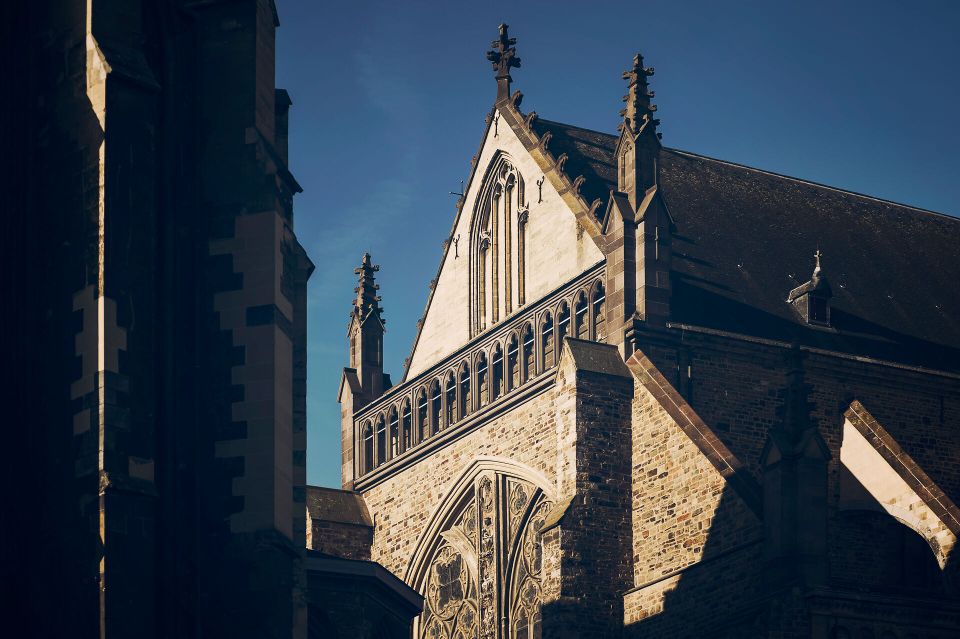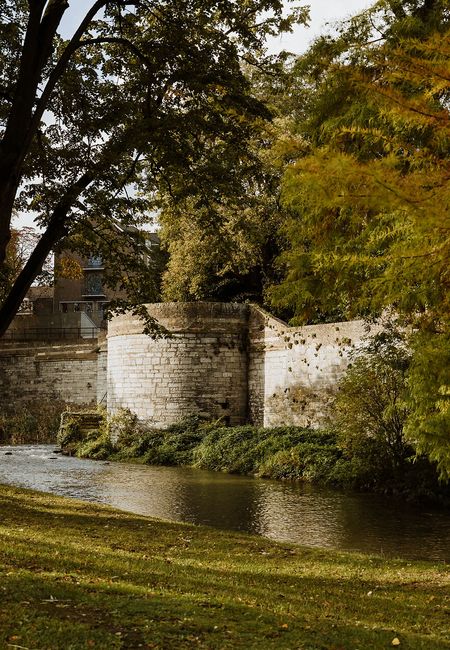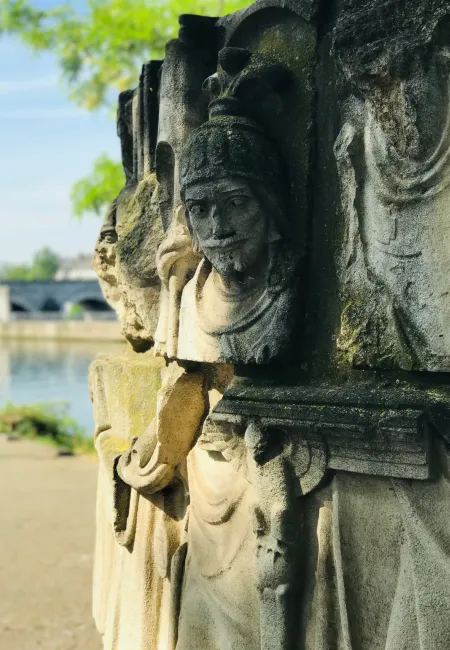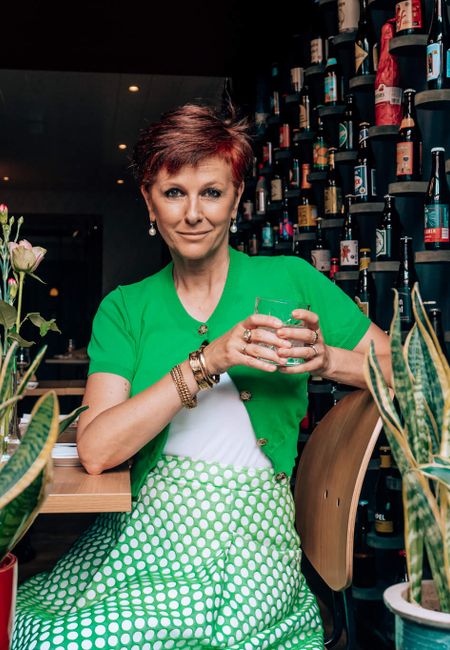Discover German influences in Maastricht
For many Dutch people, Maastricht feels like a little piece of abroad. Whether it is because of its unusual architecture, its joie de vivre or its distinctive dialect: it is and remains a unique city. And although it is regularly described as 'Petit Paris', there are also plenty of German influences. Wondering what, for instance, German emperor Charlemagne has to do with Maastricht? We take you on a tour. Los geht's!
Truly European
It may not be the first thing you think of, but Maastricht is pre-eminently a European city. In 1992, for instance, it signed the EU Treaty, which, among other things, laid the foundation for the later introduction of the euro. However, the idea of a united Europe is much older and takes us back to the Middle Ages, to 800 to be precise. That was when Charlemagne, who later had Aachen Cathedral built, was crowned emperor of the Frankish empire. The Frankish empire, which covered much of western Europe, was inspired by the Roman empire, but on a Christian basis. To legitimise his power, Charlemagne invoked Saint Servatius, whom he designated as his patron saint. And this is where Maastricht immediately comes into the picture.
The legend - of Saint Servatius
Saint Servatius was the first bishop of Maastricht. After his death in 384, several miracles attributed to him took place. His tomb, located in a wooden chapel, soon grew into a place of pilgrimage and eventually formed the basis of today's Saint Servatius Basilica, located - not coincidentally - on Charles V square.
So Charlemagne had not chosen just any old saint as patron saint. Saint Servatius continued to serve as patron saint to many later German emperors. Thus, a second St Servaas church was built in honour of this ice saint in Quedlinburg, Germany, located on the eastern border of the empire. In this way, the empire was literally 'embraced' by Saint Servatius.
Basilica Of Saint Servatius
Basilica Of Saint Servatius is closely linked to Germany not only by its history, but also by its architecture. Several elements, including the round arches with red band in the west building, are typically German. The basilica even has a 'twin sister': in Speyer, Germany, there is a church that resembles Servatius like two drops of water.
The treasury of Saint Servatius' Basilica houses several relics and objects dedicated to Saint Servatius. Worth mentioning, for example, are Servaas' bust and the 'reliquary' in which Servaas' relics are kept. A visit to the basilica and treasury is highly recommended: it is not without reason a very important cultural highlight of Maastricht.

-
Basilica Of Saint Servatius
Basilica Of Saint Servatius
This oldest basilica in the Netherlands has one of the richest treasuries in Europe. More info on Saint Servatius Basilica
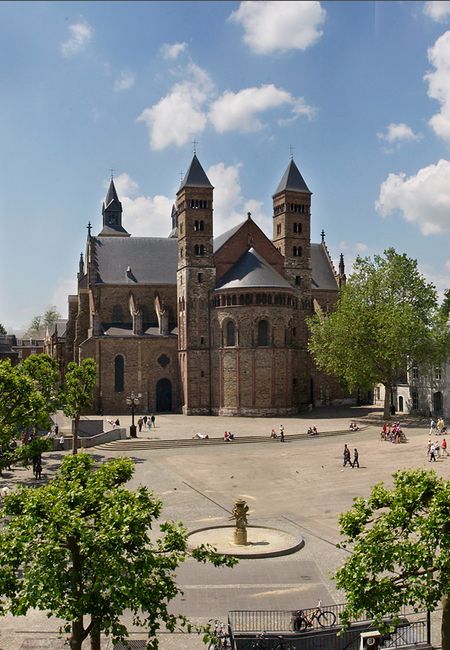
From Veldeke
Saint Servatius forms a link with Germany for another reason. Indeed, the legends about the saint were translated from Latin around 1170 by Henric van Veldeke, the first named poet in the Low Countries. Van Veldeke wrote his Life of Saint Servatius in a mixture of Middle Dutch, Limburgish and Middle High German. Consequently, Van Veldeke's stories are considered the basis of Dutch, Limburgish and German literature. The famous poet has been immortalised as a bronze statue on Henric van Veldeke Square, right next to St Servatius Basilica and Sint Janskerk (St. John's Church). The Limburg dialect society Veldeke, among others, owes its name to the poet.

Mestreechter Taol
Speaking of Limburgish, one of the defining characteristics of Maastricht is of course its dialect, affectionately called the 'Mestreechter Taol' by its speakers themselves. It is the most vital urban dialect in the Netherlands and also has the oldest and liveliest written tradition, which more or less goes back to - you guessed it - Henric van Veldeke.
Maastrichtish is officially classified as Trichterlands, but it also has many influences from (Rhineland) German. For example, the Maastricht 'fisternölle' (tinker) originally comes from the Aachen dialect. Other examples of German loanwords are 'aomzeik' (ant, Aachen: 'Omeseeck'), 'jatse' (to be out and about, Rhenish: 'jatzen') and 'klasjenere' (to reason, talk, Rhenish: 'klatschen'). Want to practise the Mestreechter Taol before your visit? Then be sure to visit the extensive Mestreechter Taol website and remember: 'The Mestreechter Taol is of us all!'.
German Gate
A final link to Germany is the German Gate. This used to be part of the old city wall around Maastricht, which included several gates. The German Gate, also called Akerpoort or Wyckerpoort, was part of the city wall in Wyck and formed the entrance from Aachen. The original gate dated from the 14th century, but was renewed several times and eventually became increasingly 'encapsulated' by the expanding fortifications. Eventually, the German Gate, along with almost all of Maastricht's other city gates, was demolished in the mid-nineteenth century.
Fortunately, much of the city wall and defensive ramparts did remain. So you can walk atop the old ramparts in the city park. From there, you can just barely make out the outline of the Sint-Servaas bridge, which has been depicted as a mintmark on the two-euro coin since 2017. And so we are back where we started: Maastricht is a thoroughly European city. Bis bald!

